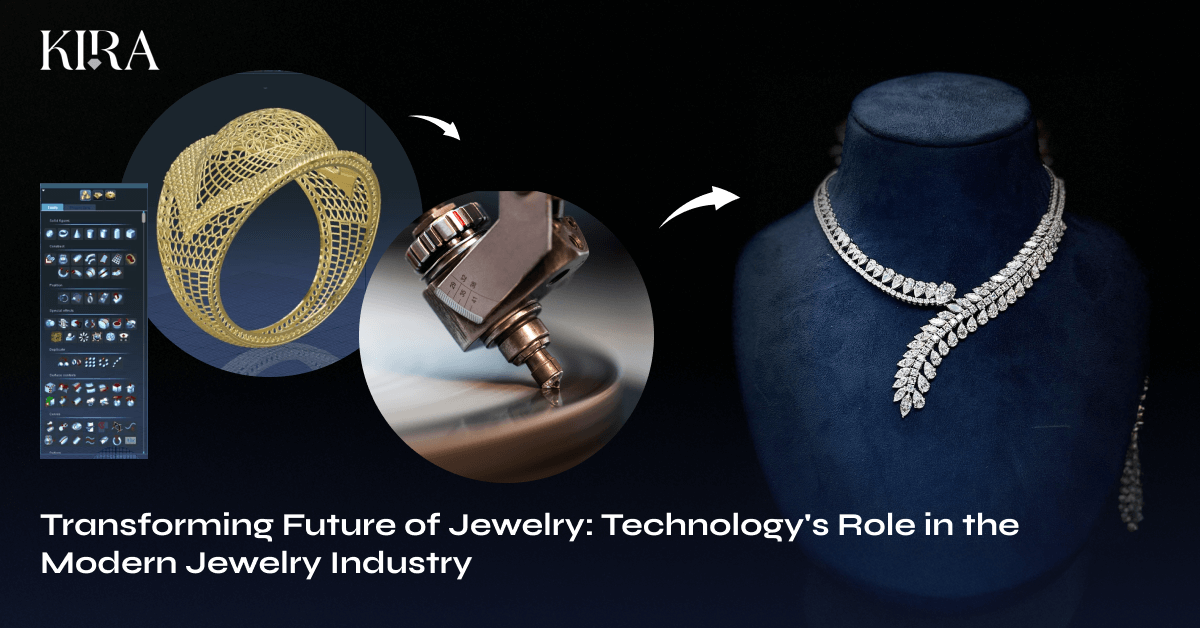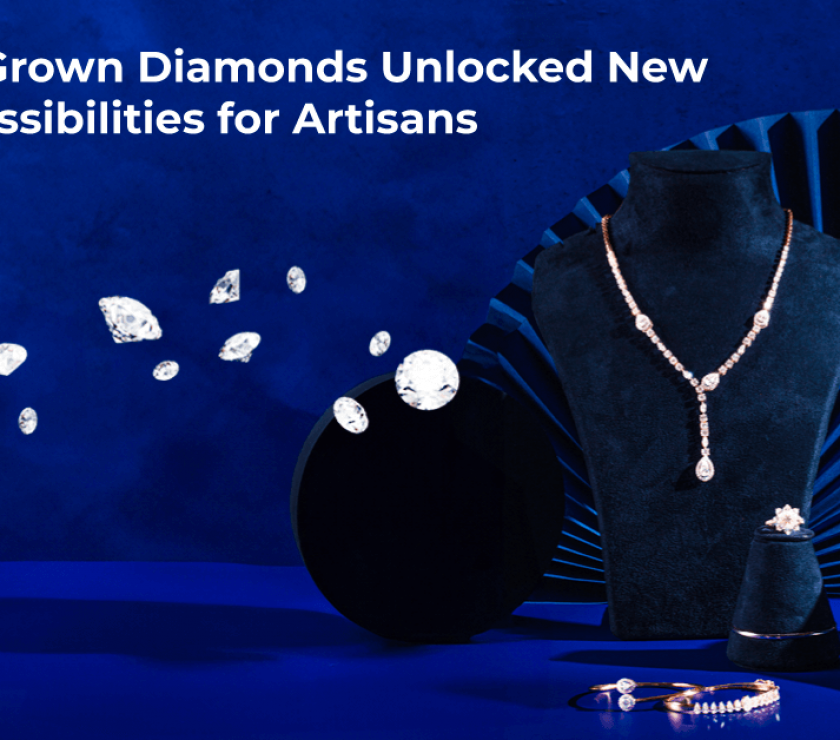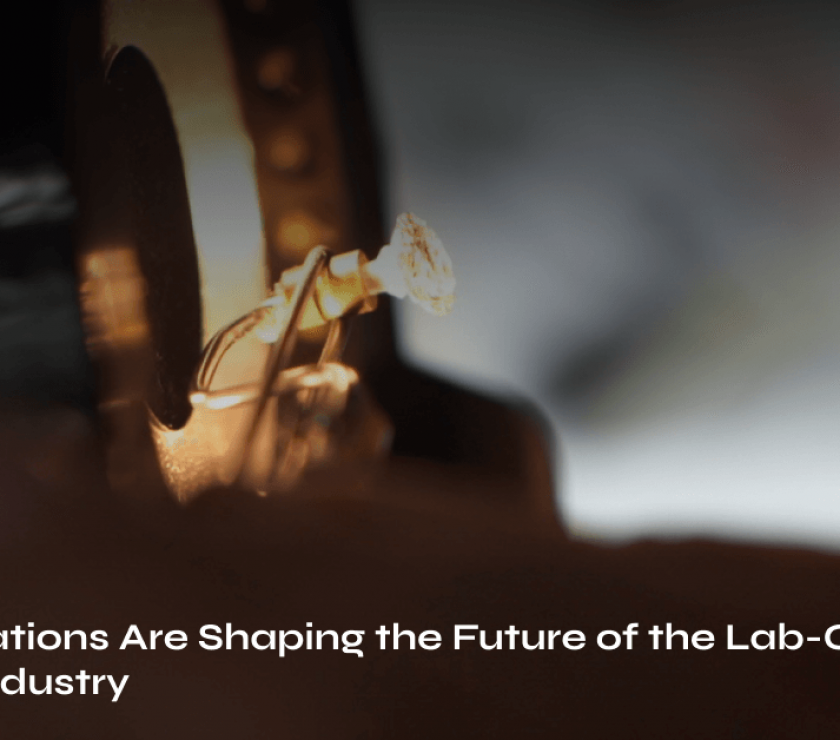Technology’s Role in the Modern Jewelry Industry

The jewelry industry, long associated with timeless craftsmanship and tradition, is undergoing a revolutionary transformation powered by technology. From the adoption of sustainable practices to tools that enhance design efficiency, the integration of technology is reshaping every facet of this vibrant sector.
One standout innovation is the rise of lab-grown diamonds (LGDs). With their ethical appeal, reduced environmental impact, and cost-effectiveness, LGDs are becoming a preferred choice for modern consumers. At Kira, we’re proud to be at the forefront of this movement, championing sustainable and accessible luxury through state-of-the-art technology.
This blog delves into how technology is driving sustainability, customization, and transparency in the jewelry industry, setting the stage for a future where innovation meets tradition seamlessly.
The Role of Technology in the Jewelry Industry
Embracing Innovation in Jewelry
Staying ahead in the jewelry industry demands constant innovation. With evolving consumer preferences and increasing competition, leveraging advanced technology has become essential. This innovation isn’t just about aesthetics but also efficiency, sustainability, and market relevance. Key areas of transformation include:
- Sustainability: Lab-grown diamonds consume significantly less energy and water compared to traditional mining processes. LGDs also reduce the carbon footprint, addressing environmental concerns.
- Energy Conservation: Solar-powered manufacturing facilities, like Kira’s in Surat, showcase the potential of renewable energy in jewelry production.
- Water Conservation: Unlike diamond mining, which consumes vast amounts of water, LGD production requires minimal water usage.
3D Printing and Jewelry Design
3D printing is revolutionizing jewelry design by enabling rapid prototyping and unprecedented customization. This technology allows:
- Intricate Designs: Additive manufacturing makes it possible to create designs that were once impossible by hand.
- Faster Production: Prototypes can be developed quickly, saving both time and resources.
For example, luxury brands are using 3D printing to craft high-end collections with precision and artistic finesse.
Lab-Grown Diamond Technology (LGD)
Lab-grown diamonds are redefining luxury with their ethical and customizable attributes. Advanced techniques like Chemical Vapor Deposition (CVD) ensure affordability and exceptional quality.
Key benefits include:
- Ethical Sourcing: Free from the controversies of traditional mining.
- Customization: LGDs offer unparalleled flexibility in shapes, sizes, and designs, enabling consumers to create personalized jewelry that resonates with their individuality.
- Affordability: By reducing production costs, companies like Kira make diamond jewelry accessible to a wider audience.
Blockchain Technology in Supply Chain
Blockchain is enhancing transparency and trust in the jewelry industry. By tracking diamonds from seed to final product, blockchain ensures:
- Authenticity: Buyers can verify the origin and quality of their purchase.
- Ethical Assurance: Transparency eliminates doubts about sourcing practices.
For example, some brands use blockchain to offer customers detailed immutable information about the journey of their diamonds, reinforcing consumer confidence.
Opportunities Created by Technology
Expanding Market Reach
E-commerce and augmented reality (AR) are transforming how consumers shop for jewelry:
- Virtual Try-Ons: AR tools allow customers to visualize how a piece will look before purchase, enhancing satisfaction.
- Global Accessibility: Online platforms enable brands to reach a broader audience.
Statistics show that over 84% of online jewelry shoppers prefer AR features to interact with products before buying, underlining its growing importance.
Sustainability and Ethical Practices
Technology is paving the way for eco-friendly practices in jewelry production:
- Renewable Energy: Solar-powered facilities, such as Kira’s in Surat, highlight the industry’s shift towards sustainable manufacturing.
- Reduced Waste: Advanced production techniques minimize material wastage.
Customization and Personalization
Meeting diverse consumer preferences has never been easier. Technologies like AI-driven design tools enable:
- Unique Designs: AI-powered consultations allow customers to co-create one-of-a-kind pieces.
- Efficient Processes: Streamlined workflows reduce production times while maintaining quality.
Success Stories in the Jewelry Industry
- Kira: Leveraging CVD reactors for cost-effective production, Kira is making LGDs a household name. Their commitment to innovation and sustainability is encapsulated in their “slogan seven p” philosophy.
- 3D Printing Pioneers: Leading luxury brands are embracing 3D printing to craft intricate, high-value collections.
- Blockchain Integration: Companies using blockchain to ensure traceability are setting new standards for trust and transparency in the industry.
What’s Next for the Jewelry Industry? – Future Trends and Predictions
- AI in Design and Retail: AI will play a central role in creating bespoke designs and enhancing customer experiences.
- Digital Twin Technology: Real-time inventory management through digital twins will streamline operations.
- Sustainable Production: Expect wider adoption of eco-friendly practices as consumers demand ethical luxury.
Conclusion
Technology is not just reshaping the jewelry industry—it’s unlocking new opportunities that redefine the way jewelry is designed, produced, and consumed. From sustainability to customization, the possibilities are endless.
At Kira, we’re leading the charge with innovative solutions that blend tradition with modernity. Join us in exploring how these advancements can elevate your jewelry experience, offering you the perfect combination of luxury and sustainability.
Why Partner with Kira? ➣ Benefits for retailers: High-quality, ready-made jewellery designs and loose diamonds. ➣ Access to a vast inventory of 250,000 diamonds in various shapes and sizes. ➣ Reliable global delivery and competitive pricing. |










